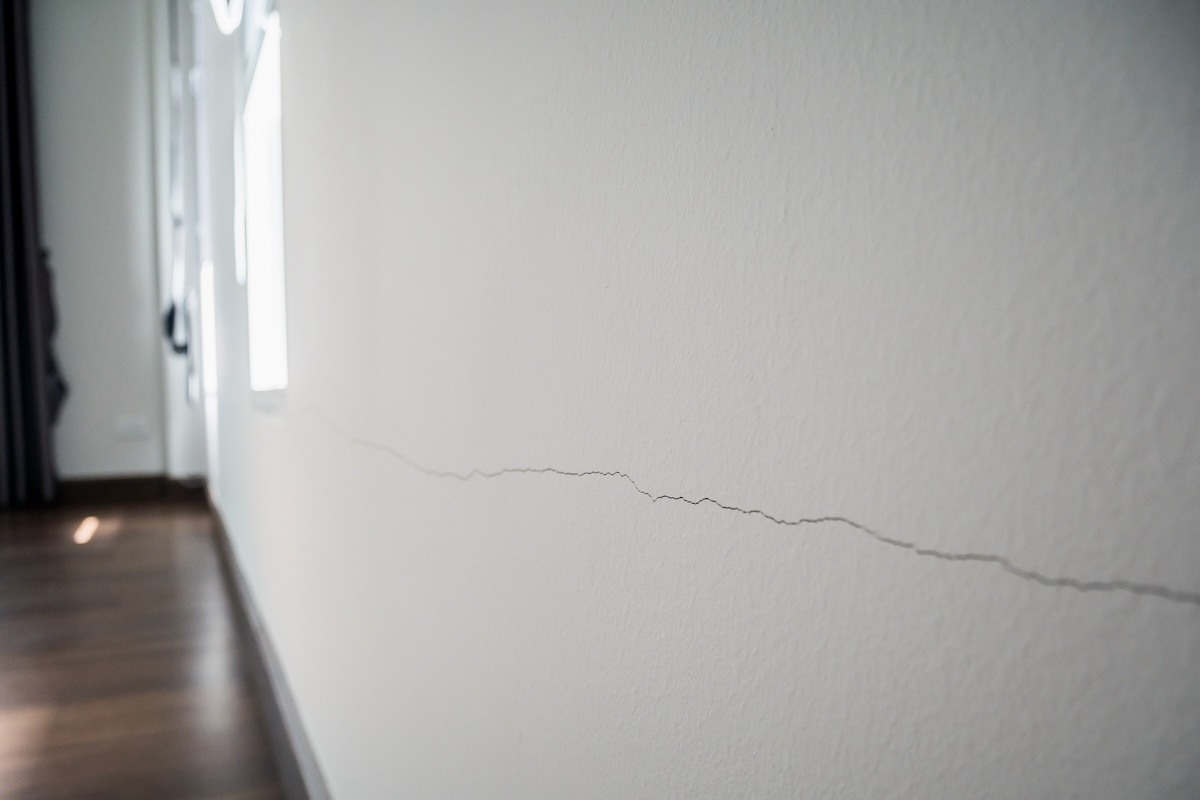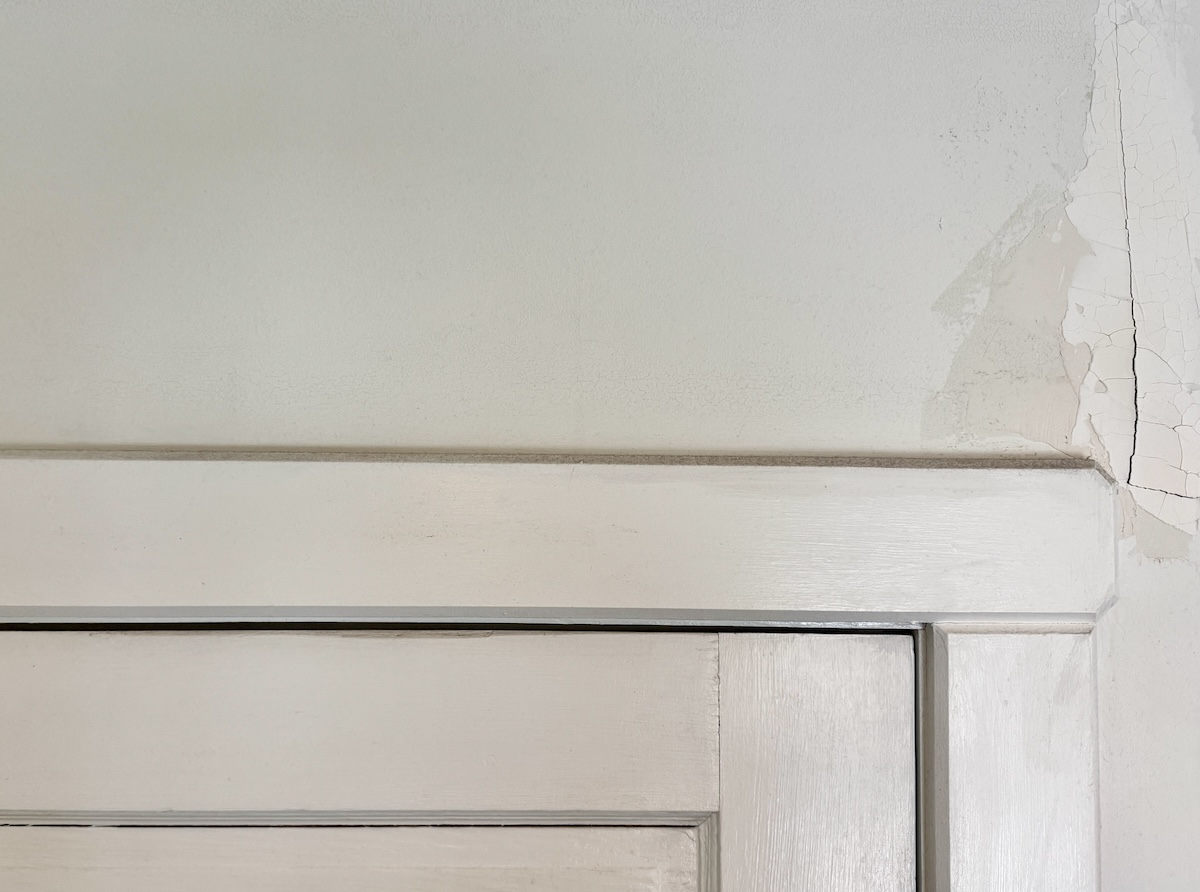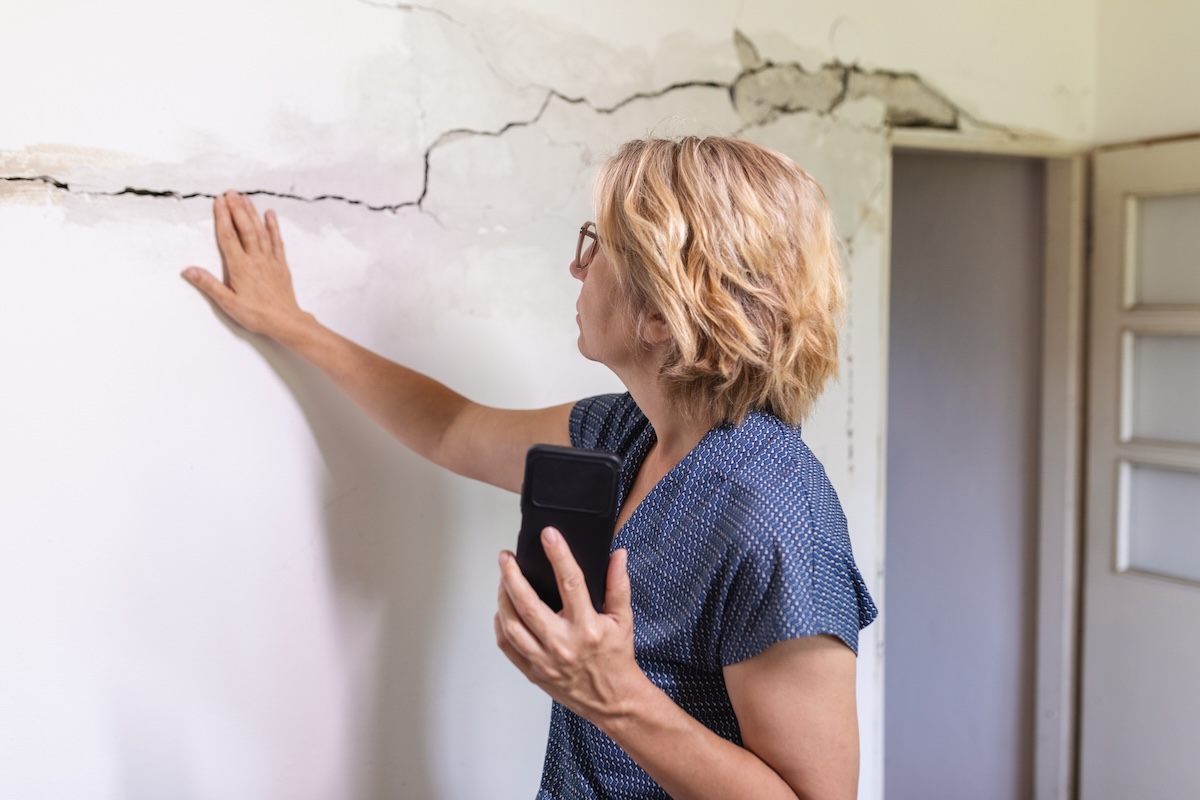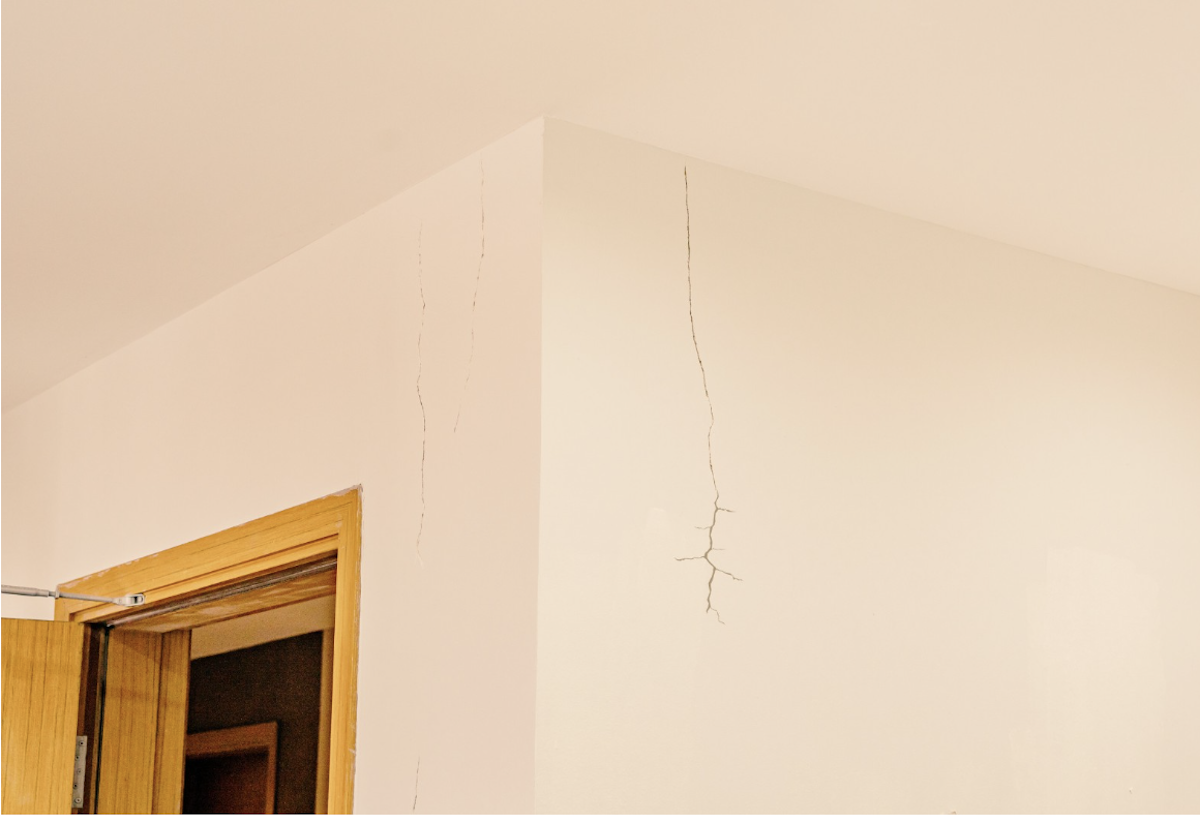

We may earn revenue from the products available on this page and participate in affiliate programs. Learn More ›
If you’ve noticed a few cracks in your walls, take a breath and then keep reading. The good news is that often a crack in walls, like around a door jam or window, requires nothing more than an easy cosmetic fix. Other times it could signify a structural issue that will need extensive repairs. Before you start calling a foundation repair expert or structural engineer, learn how to identify the difference between a harmless crack and one that needs experts to fix a bigger-than-drywall issue.
“The most common signs of stress that people notice are cracks in drywall, doors and windows out of square (pinch at the top on one side with a gap on the other), cracked and sloping floors, and exterior masonry cracks,” says Bob Brown, foundation repair expert and author of Foundation Repair Secrets. “In 30-plus years, I have seen very few structurally deficient homes. Most of the problems that I see are serviceability or cosmetic in nature.”
The reason is that wall cracks are fairly common in both new and older homes and are often the result of normal house “settling.” Drywall repair can quickly and inexpensively remedy these. Occasionally, however, cracks in walls signify a larger problem that should be addressed before you attempt to repair the crack. Here’s how to determine whether a crack is flagging a serious problem, and what steps to take to get your wall back in shape.
Types of Cracks in Walls
When diagnosing cracks in walls, it’s important to know the difference between the types of cracks in walls that can appear. The most common types are hairline, vertical, horizontal, diagonal, and stairstep.
Hairline

The least concerning wall cracks are hairline cracks in drywall. Just like the name indicates, these skinny cracks are usually about a millimeter wide and limited just to cracks in drywall. Typically, they are cosmetic and superficial cracks that a DIYer can repair.
Vertical
Some vertical cracks in walls are not concerning. For example, if you have a vertical crack that is super straight and is on a non-loadbearing wall, then it’s likely along the seam of two drywall sheets. Usually it indicates imperfect drywall taping and is repairable. However, if a vertical crack is expanding, if there are many vertical cracks, or if they are on a loadbearing wall, then there could be an issue with your home’s foundation.
Horizontal
If you see a horizontal wall crack, then it’s time to ask an expert for an evaluation. Horizontal cracks in drywall could be a bigger issue; they are usually caused by uneven foundation settling or a water drainage issue.
Diagonal
Cracks that appear around door or window frames and extend at a 45-degree angle could indicate uneven settling or moisture accumulating beneath the house that’s expanding the soil at a different rate than the perimeter. Usually, either the soil underneath the house wasn’t compacted evenly during construction or there’s a drainage issue causing the uneven stress.
Stairstep

Usually following the pattern of masonry near an opening for a window or door, a stairstep crack is caused by settlement or an issue with the bricklaying. It’s often seen on a home’s exterior, with the mortar between the bricks cracking. If brick ties—the connection to the house framing—are missing or failing, this causes a weak spot in the brick façade that can crack over time. The affected bricks will feel loose if you try to move them; removing them and reinstalling brick ties can fix the issue. If you can’t move the bricks, it might be a foundation issue.
Causes of Cracks in Walls

Settling of a newly built home
Small wall cracks are common in newly built homes and are usually house-settling cracks. It’s a good idea to wait a year after your home was built before repairing any cracks. This gives the materials time to settle. After that, you can repair the cracked joints (see below for repair instructions) without worrying that more will appear. If cracks reappear and get wider, then there may be uneven soil settling underneath the structure that will benefit from an inspection.
Shifting over time
Houses of any age move and shift subtly over time, and the weakest area in a wall is the most likely to crack. While the builder adjusts studs to install a door or a window, these areas are weaker than the rest of the wall, and when settling occurs, these spots are the first to develop cracks. Hairline cracks above doorways do not usually indicate a structural problem.
Temperature changes
Fluctuations in temperature and humidity levels can cause framing members and drywall to expand and contract, resulting in cracking. So, vacation homes and those that sit empty for a few months are prone to developing cracks in both walls and ceilings. This is due to a lack of climate control in the house while it is not occupied compared to those made in a lived-in home for comfort during temperature swings outdoors.
Construction mistakes
When drywall panels are installed, the seams between the drywall panels are filled with joint compound and covered with paper tape. If the tape doesn’t have enough joint compound underneath to stick firmly, it can start to pull away from the wall over time. When this happens, you’ll see a fine straight crack where the tape has lifted.
Moisture
Water leaking from a window or the roof, or even a leaky attic water line, can run down inside a wall’s framing and saturate the drywall, which then softens and deteriorates, creating a crack with noticeable yellow or brownish stains. If the leak is fresh, such as from a recent rain, the area might also feel damp to the touch. Before fixing the crack, which will require replacing the damaged section of drywall and then retaping, it’s important to find the source of the leak and repair it.
Structural problems
Jagged or diagonal cracks indicate that the foundation may have shifted or sunk, or another problem has occurred, such as the deterioration and collapse of supporting wood members due to termite damage. Likewise, cracks wider than ¼ inch indicate a potential problem with the home’s structure. These cracks warrant bringing in a reputable engineer to inspect your home’s structure and pinpoint the cause. Once the structural problem is resolved, you can make drywall repairs.
When to Worry About Wall Cracks

Cracks are typically categorized into three categories: cosmetic, serviceable, and structural. Cosmetic includes hairline cracks. Serviceable cracks can affect the building envelope and are more noticeable. You need to deal with structural cracks in walls immediately. “A single crack, unless it is ¼-inch [wide] or more is not critical unless it is together with a group of stress [cracks],“ says Brown.
“If you have these concerns you should call a forensic geotechnical engineer who can advise you in a fair and unbiased way,” says Brown. He explains that unlike foundation repair contractors, forensic engineers have no incentive to sell you anything, so they can provide an objective assessment. “Foundation repair salespeople almost always find a way to characterize all of these cracks as indicative of needing foundation repair because that is their job.”
FAQ
Sometimes. If you see a hairline crack that’s less than 1/8-inch thick, it’s likely just a cosmetic issue. Single ¼-inch cracks are worth watching. When you see groups of cracks that are ¼ inch and thicker, groups of cracks, or cracks in load-bearing walls, it’s best to call a forensic engineer for an assessment.
If the floor joists run perpendicular to the wall, then it is likely a structural wall. Thicker walls also tend to be structural walls.
Note: Never attempt to take down a wall unless you are confident that it’s not structural.
For hairline cracks in walls, a simple drywall repair is all that’s needed. If you have a structural issue, a forensic engineer may recommend a soil analysis, improvement of water flow around the foundation, underpinning, or pressure grouting.
Plaster repairs are more involved than drywall repairs. If you have severe damage to a plaster wall, it may be easier to replace with drywall. If not, then first remove any loose portions of the plaster. Then press joint compound into the crack. After it is dry, sand it lightly and reapply another coat of joint compound and sand when it’s dry.
Fixing cracks in basement walls is the same as repair of other walls in the home. You can repair hairline cracks with joint compound. If the crack is larger than ¼-inch wide or if it’s in a group of cracks, then it’s best to ask a forensic engineer to assess.
